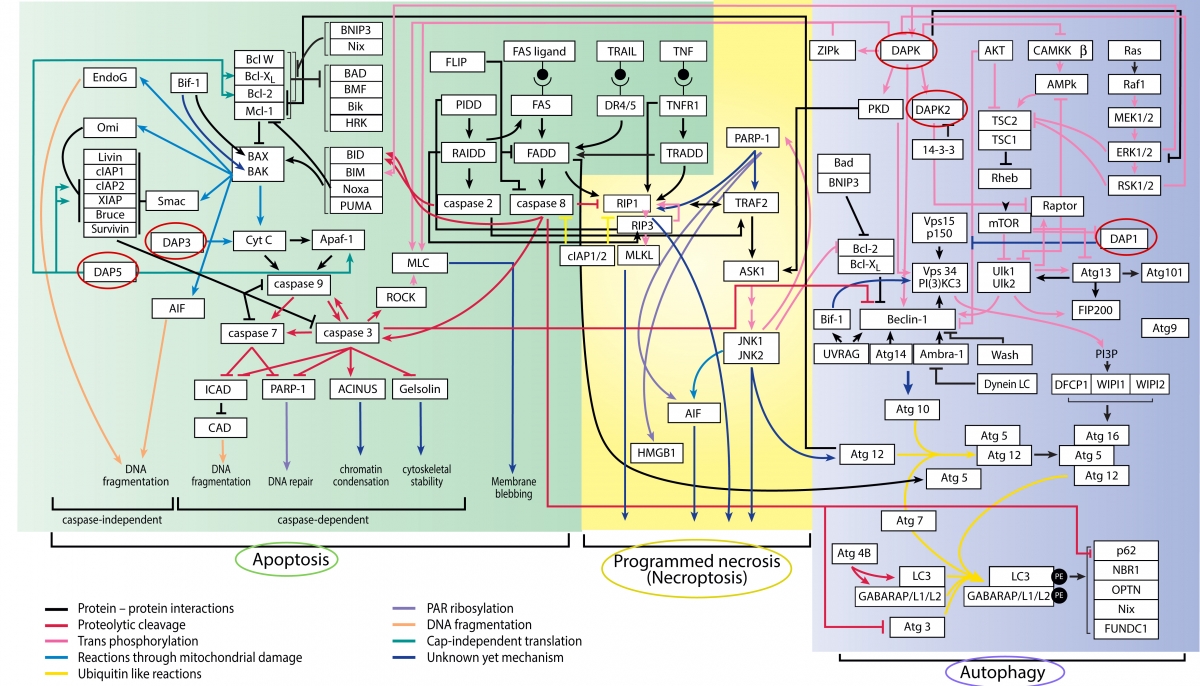Programmed cell death (PCD) is a fundamental cell biological process that is necessary for embryonic development and tissue morphogenesis, and removal of unwanted, infected or damaged cells during an organism’s life-time. Its misregulation can lead to diseases such as cancer and neuro-degeneration.
The three main signaling modules that affect a cell’s decision to live or die are apoptosis, programmed necrosis and autophagy. Each is characterized by a set of specific morphological features, and is regulated and executed by individual signaling pathways. However, certain protein nodes in these pathways can be shared by one or more module, representing points of integration or inter-modular cross-talk. The sum total of these individual pathways and the interactions among them is referred to as the PCD network.



